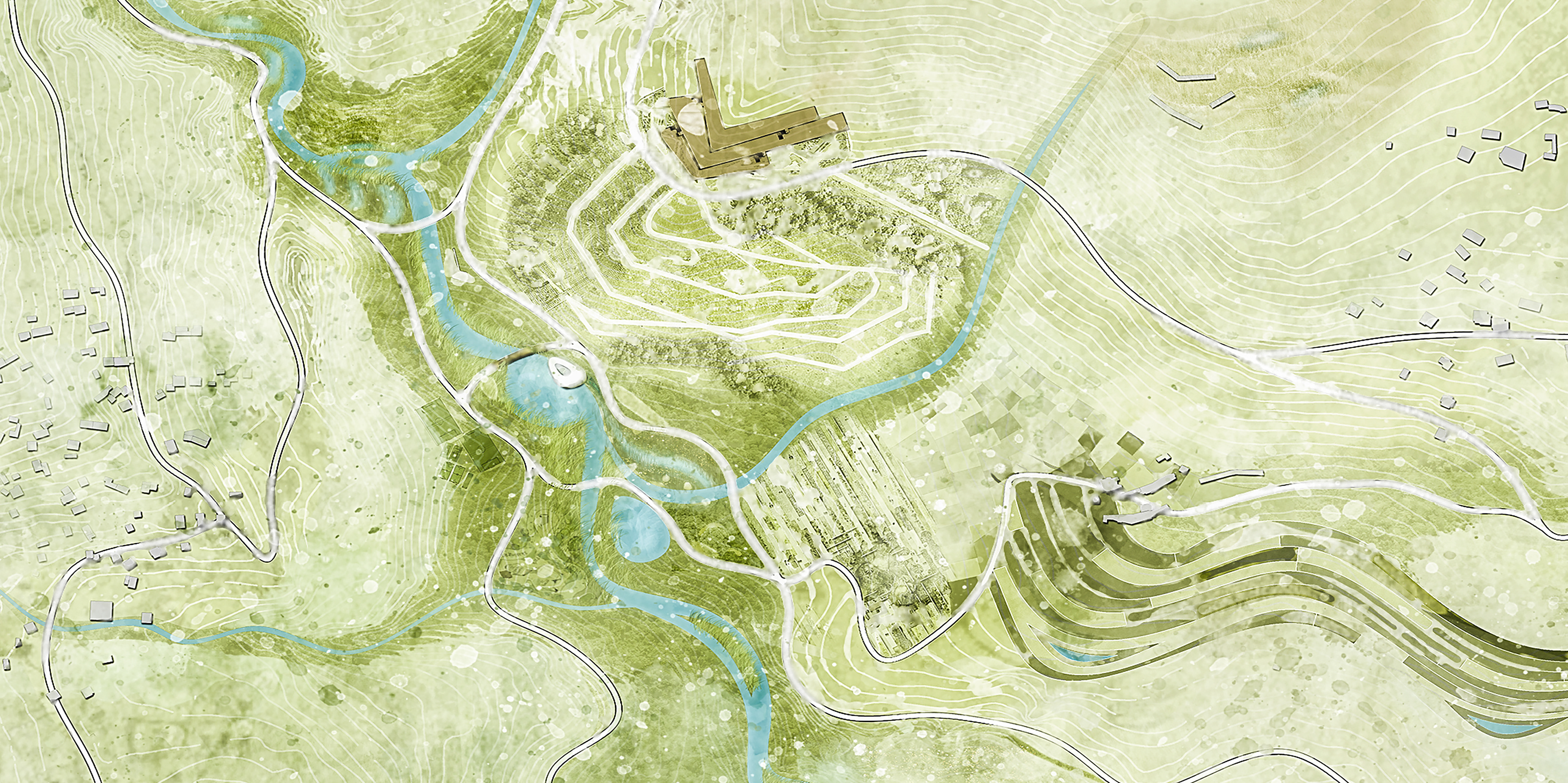
A Multi-scale Ecological Approach to Planning and Urban Design: Nature-based Solutions to Green Infrastructure and Bio-Region: Proposal for Rural Neighborhoods of Bornova within the Context of İzmir Metropolitan City’s Central Greenbelt
Joint Project Studio
Ege University and İzmir Institute of Technology
Greenbelt policy is nowadays perceived as the most common method to control urban growth as well as to provide linkage between nature-rural-urban continuums within the regional context. Since this project the green belt with Homeros Valley and urban fabric (ie Bornova Stream Micro-basin) consecutively, the planning and design scenario germinated and emerged from the state-or-art green belt policy. As the enlargement of İzmir towards rural periphery brings about significantly socio-ecological and economic problems, the topic of green belt, which can be used to limit sprawl, has long been on the agenda of academia and the local government of İzmir. Therefore, the project firstly presents several analytics and comparative infographics on green belt planning to tie the conceptualized green belt with rural and urban communities across Bornova Stream. Therefore, in this project, planning and urban design solutions were developed in a new ecological hierarchy starting from the Central Green Belt of İzmir. This approach, as a new planning and urban design idea, focuses on how we can think of hierarchies across scales. After defining the boundaries of the İzmir's central green belt, the project mainly aims at making proposals to the social and economic problems of the clustered rural areas, especially around the Homeros Valley, solving the physical and ecological problems of the district. Lastly, the project attempts to deliver green infrastructure solutions on a local scale. in this project, planning and urban design solutions were developed in a new ecological hierarchy starting from the Central Green Belt of İzmir. This approach, as a new planning and urban design idea, focuses on how we can think of hierarchies across scales. After defining the boundaries of the İzmir's central green belt, the project mainly aims at making proposals to the social and economic problems of the clustered rural areas, especially around the Homeros Valley, solving the physical and ecological problems of the district. Lastly, the project attempts to deliver green infrastructure solutions on a local scale. in this project, planning and urban design solutions were developed in a new ecological hierarchy starting from the Central Green Belt of İzmir. This approach, as a new planning and urban design idea, focuses on how we can think of hierarchies across scales. After defining the boundaries of the İzmir's central green belt, the project mainly aims at making proposals to the social and economic problems of the clustered rural areas, especially around the Homeros Valley, solving the physical and ecological problems of the district. Lastly, the project attempts to deliver green infrastructure solutions on a local scale. focuses on how we can think of hierarchies across scales. After defining the boundaries of the İzmir's central green belt, the project mainly aims at making proposals to the social and economic problems of the clustered rural areas, especially around the Homeros Valley, solving the physical and ecological problems of the district. Lastly, the project attempts to deliver green infrastructure solutions on a local scale. focuses on how we can think of hierarchies across scales. After defining the boundaries of the İzmir's central green belt, the project mainly aims at making proposals to the social and economic problems of the clustered rural areas, especially around the Homeros Valley, solving the physical and ecological problems of the district. Lastly, the project attempts to deliver green infrastructure solutions on a local scale.
